- News
- Reviews
- Bikes
- Accessories
- Accessories - misc
- Computer mounts
- Bags
- Bar ends
- Bike bags & cases
- Bottle cages
- Bottles
- Cameras
- Car racks
- Child seats
- Computers
- Glasses
- GPS units
- Helmets
- Lights - front
- Lights - rear
- Lights - sets
- Locks
- Mirrors
- Mudguards
- Racks
- Pumps & CO2 inflators
- Puncture kits
- Reflectives
- Smart watches
- Stands and racks
- Trailers
- Clothing
- Components
- Bar tape & grips
- Bottom brackets
- Brake & gear cables
- Brake & STI levers
- Brake pads & spares
- Brakes
- Cassettes & freewheels
- Chains
- Chainsets & chainrings
- Derailleurs - front
- Derailleurs - rear
- Forks
- Gear levers & shifters
- Groupsets
- Handlebars & extensions
- Headsets
- Hubs
- Inner tubes
- Pedals
- Quick releases & skewers
- Saddles
- Seatposts
- Stems
- Wheels
- Tyres
- Health, fitness and nutrition
- Tools and workshop
- Miscellaneous
- Buyers Guides
- Features
- Forum
- Recommends
- Podcast
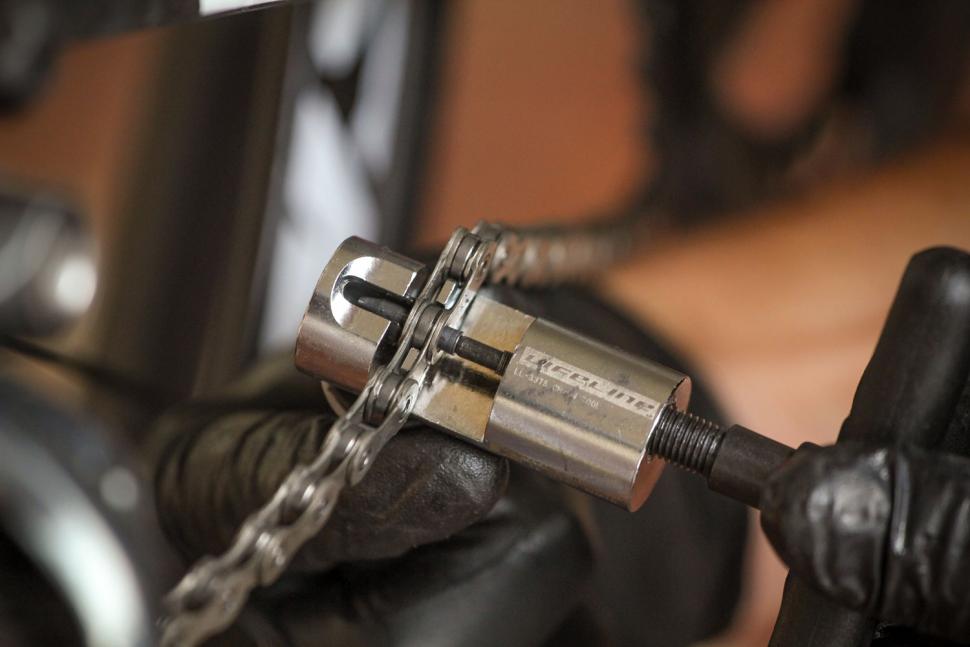 lead
leadHow to replace a chain — 14 easy steps to a fresh transmission
Chains wear out. If you're a strong rider or cover lots of dirty miles, it could wear out faster than you think. Allowing a chain to develop wear, effectively increasing the pitch, the distance between the rollers joining the links, will only wear out the sprocket and chainrings - the really expensive bits of your transmission. Save yourself cash in the long run by switching chains. Here's how you do it.
Our guide below shows you what we believe is the best method to replace a chain. We've included a list of the tools and materials that you will need to complete the job and, in some cases, where you can buy them. If there are others that you prefer then feel free to let everybody know in the comments.
Tools & Materials
You'll need:
•A new chain
•A chain link-splitter tool
•A new chain measure tool
•An old spoke
•Pliers
1. Does it need replacing?
The best way to check to see if your chain needs replacing, is to use a chain wear indicator tool. Hook the curved end of the tool against the rounded centre portion of a link roller and lay the tool along the chain. Add a little pressure to the pedals to pull the chain taut. The other (gauge) end of the chain wear indicator tool should stand proud (slightly on top of) the link below it. If this is the case, the chain is fine. You'll notice the tool has two markings at the gauge end '.75' the other '1.0'. If the .75 gauge end of the tool falls into the gap between the rollers it's a sign that your chain is wearing and replacement is recommended soon, if the 1.0 end is able to drop into the link, the chain is fully worn and should be replaced immediately.
2. Clean the chain
Working on a dirty of thing is no fun, even if it’s destined for the bin, so clean it up and do the chainrings and sprockets while you’ve got the suds in the bucket. There's no point in getting old gunge straight on the new chain, so cleaner the better.
3. Drop the chain
Trying to split the chain or access and operate the master link while the chain is on the rings and under tension is tricky. Drop the chain off the chainrings. This will give you a decent loop of slack chain to work with.
4. Locate the master link
This is a split chain link, a two part 'breakable' link used to make the splitting and joining of a chain an easier and more accurate job. It could be black, gold or silver depending on the brand of chain you use. All work the same way.
Locate the roller axle pins through the two rollers. Press the opposite sides of the Master link plates together and in opposite directions at the same time. The link plates should slide apart, though they'll sometimes need a bit of persuasion especially if the chain is dirty. A set of master link pliers makes this a lot easier.
5. Always keep the master link
Keep the old master link from the outgoing chain as an emergency spare even if the rest of the old chain is heading to the bin. We generally tape it to a bit of brake or gear cable, or sometimes under the saddle, so you never get caught without it. You'll be glad you did when you, or a fellow rider, breaks a chain while out on a ride. This is still a good idea, even if you use a Shimano chain that's joined by a pin.
6. Pin pusher
If your chain isn’t one that uses a master link, you’ll need to use a traditional chain splitter tool. Insert the chain into the recessed housing of the tool ensuring the links are exactly perpendicular to the tool's drive pin, to avoid damaging the edges of the holes.
7. Screw finish
Screw the handle of the chain tool into the body of the tool, to allow the tool's drive pin to locate squarely onto the head of the chain’s link pin. When it’s all square, drive the link pin out. Don't be tempted to rush and mis-drive the head of the pin, as this can cause the hole in the outer link plate to be damaged and potentially make the fresh join less secure.
8. Un-thread the chain
The chain can now be unthreaded from the transmission. If you've never bothered to study the route the chain takes around the sprockets, chain rings, and jockey wheels of the rear derailleur do so before removal. Also don't forget to thread it through the front derailleur cage - we've seen it done when rushing. You'll need to get it right when you thread the new one back into the transmission. There is only one way that will result in functioning gears and forward drive.
9. Shorten the new chain
You'll now need to shorten the new chain to the length of the one it's replacing (assuming that was correct). To work out where the new chain needs to be split, thread the ends of both chains onto an old spoke; this allows you to hang them up (or lay out) to find the link that needs splitting. This new Shimano Ultegra comes with 116 links, the standard length. Most modern road bikes will require five or six links removing, depending on chainstay length and gearing.
10. Rethread the new chain
Some Shimano 10-speed chains are directional and must be fitted with the Shimano logos on the outward face of the links. SRAM's AXS 12-speed chain is also directional, though if you've already managed to ear out one of those you're doing well!
Loop one end of the chain through the front derailleur, the other around the rear sprockets, over the top of the upper jockey wheel and behind the front chain deflector tab in the jockey cage and to the rear of the lower jockey wheel, and inside the rear chain deflector tab. The two loose ends can now be joined.
11. Fit the pin
Some Shimano chains use a special joining pin, with a snap-off pointed leader. Bring the male and female ends of the chain together, line up their respective pin holes and insert the pin into the chain. Only the pointed leader section is joining the chain. This must now be pushed home with the chain splitter tool.
More recent Shimano chains come with a master link, so you just hook the two ends together so the master link is in the top run of chain, put the bike on the floor with the brakes on and stand on a pedal so the link clicks into place. Alternatively, use master link pliers.
12. Drive the pin home
Fit the chain tool to the chain in the normal way, to drive the new pin home. Ensure you're well lined up before cranking the chain tool handle. The new pin should slide home with ease, only the last millimetre or so will feel firm at the handle. You're looking to leave the tiny rim at the end of the new pin visible, the same as the other factory fitted ones on the other links. Over pushing the pin will result in the chain link jamming and potentially a chain failure.
13. Remove the leader
With the new link in position you'll need to remove the leader section. This requires a pair of pliers and a sharp angled twist of the wrist to break the leader free. These Park Tools cable cutters have a crimper behind the cutters that works well for the job.
14. Free up a stiff link
Sometimes the freshly joined link will run free first time, but occasionally the new join will be a little stiff. This can lead to skipping gears. When this happens we usually use our thumbs to apply a little side pressure to the link, which usually frees the link so it runs and shifts smoothly.
Latest Comments
- yupiteru 36 min 8 sec ago
Operation Snap in Wales is very good, at least in the south Wales and Gwent Police areas that I have submitted close pass reports to and as far as...
- Rendel Harris 1 hour 25 min ago
Cars and especially buses and lorries going through standing water, bumping through water-filled potholes etc at 20-30mph are quite capable of...
- Psi Squared 3 hours 16 min ago
I use Conti TR S tires in a 30mm flavor, and they inflate to 32+ mm in width on my Reserve 40/44s.
- chrisonabike 8 hours 37 min ago
Hmm... this sounds like Tolsoy on priveledge: "I sit on a man's back choking him and making him carry me, and yet assure myself and others that I...
- mdavidford 9 hours 56 min ago
Well here's an unusual celebrity edition for the collection. https://www.bbc.co.uk/news/articles/cvgxj1jy71zo
- David9694 10 hours 15 min ago
Live updates after car crashes into Well Street doctor's surgery...
- Joe Totale 10 hours 34 min ago
It's a shame that Road.cc don't provide their reviewers with spirit levels 😉
- Rendel Harris 13 hours 39 min ago
I think they're rather lovely, but if you prefer the real elegance of late '70s/early 80s shoes how about this classy and totally non-ugly pair...
- AidanR 17 hours 1 min ago
Chapeau. That is truly epic.
- chrisonabike 17 hours 41 min ago
Recognising and creating locations where people feel safe to cycle in traffic is a key part to transforming our transport systems - and indeed...
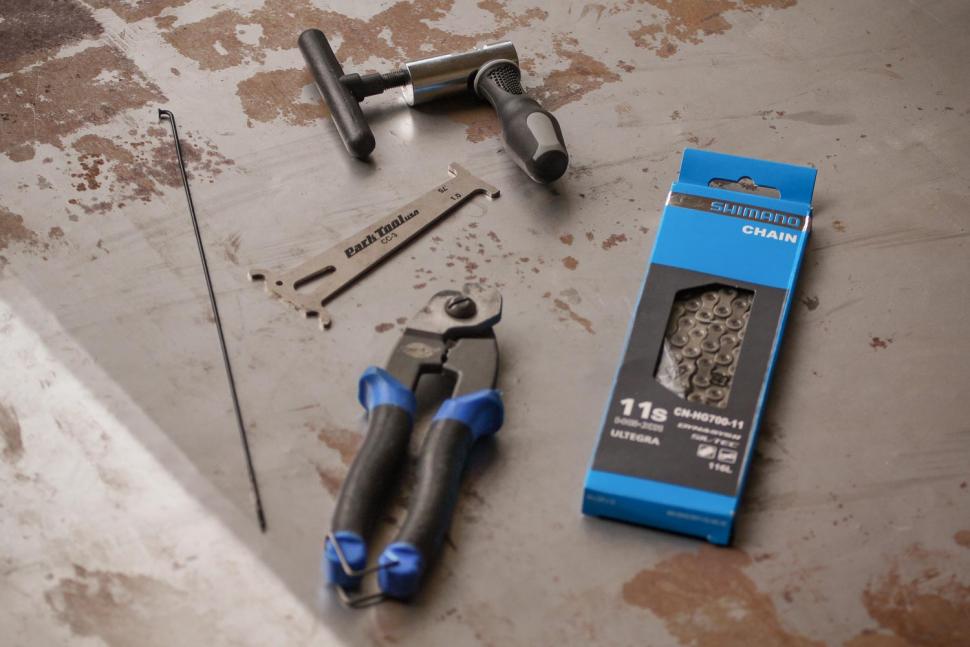


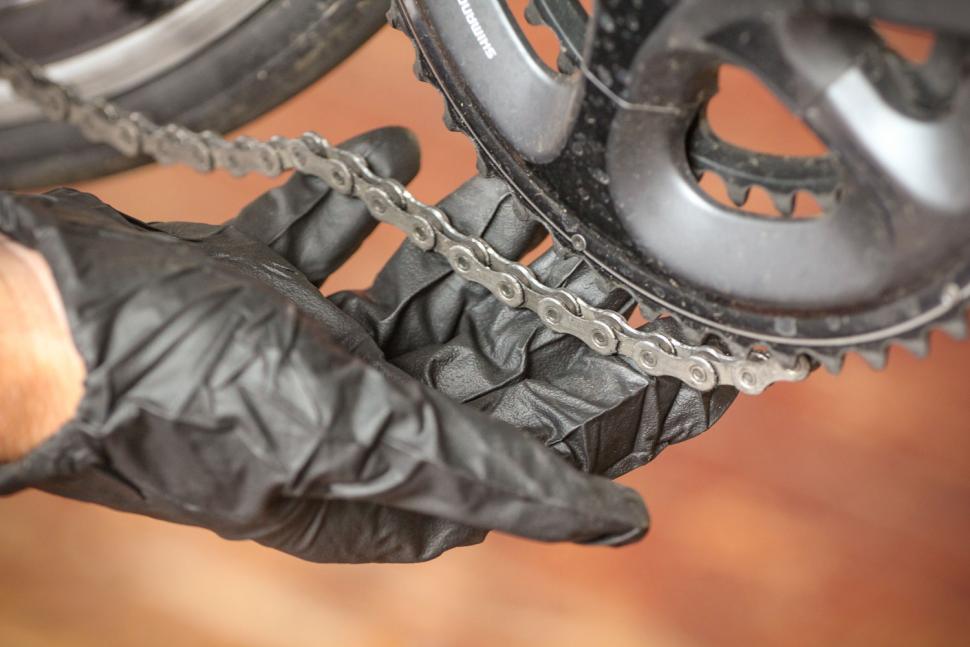


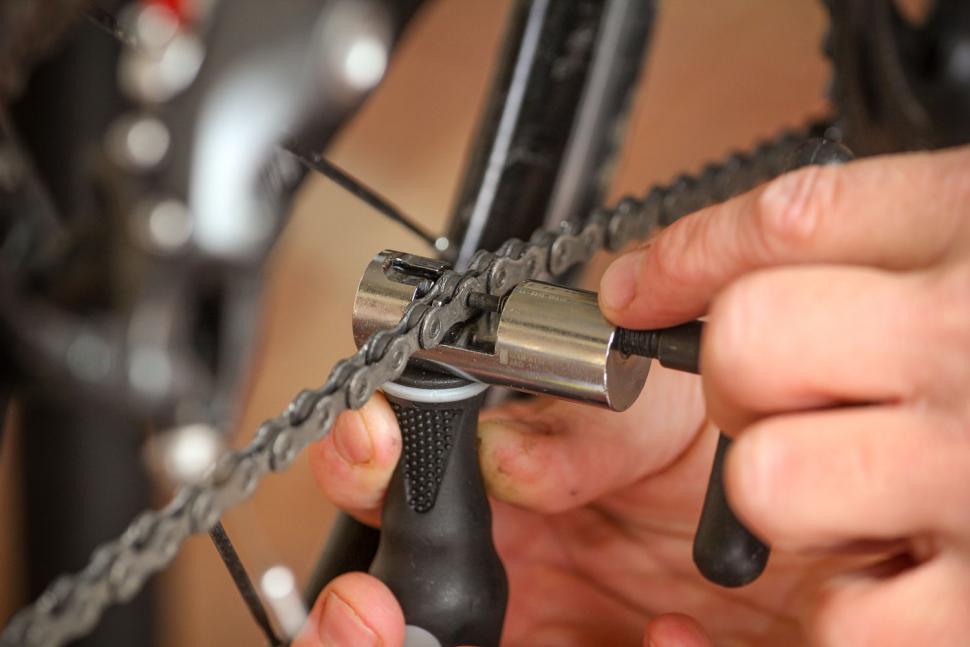
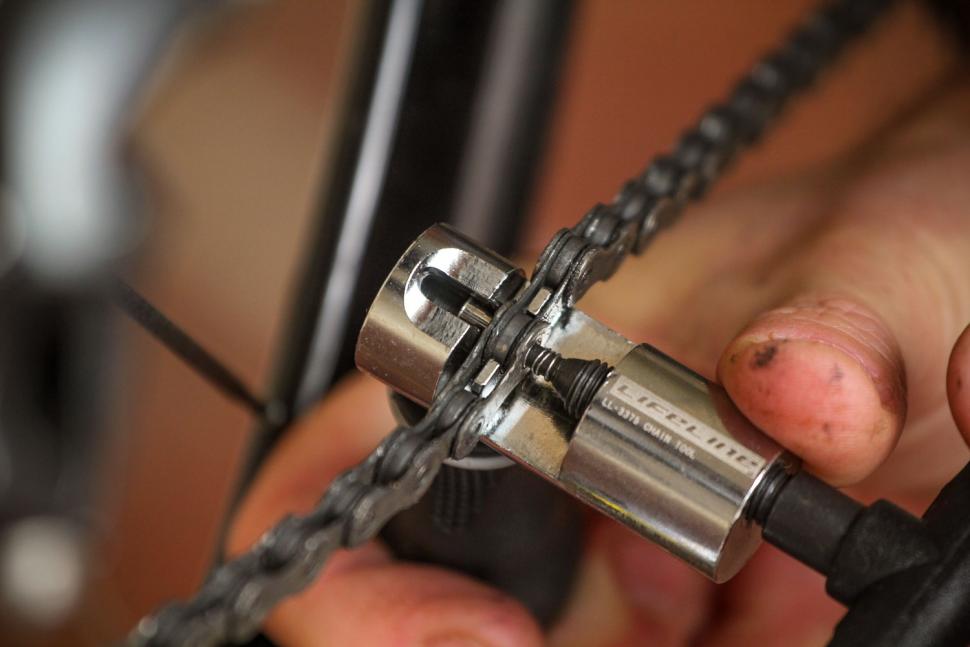


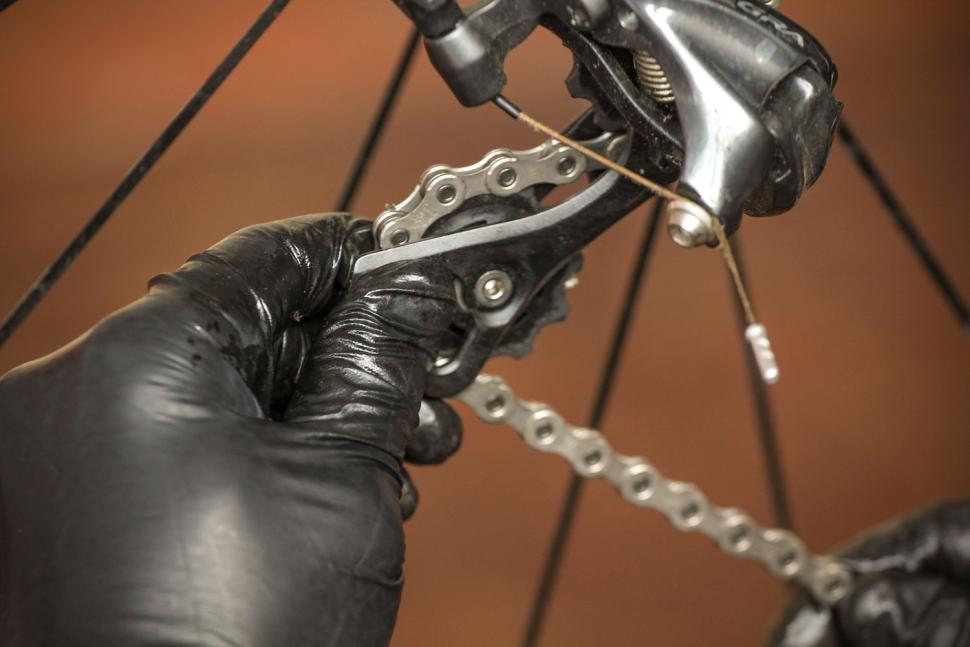



Add new comment
17 comments
Word of warning - Shimano and other Quick Link manufacturers sell their links as single use.
Single use does not mean lifetime of the chain, it means a single link closing event. In reality people do open and close them several times without issue, but if you are the sort of person that cleans the chain after every ride by removing it, you are going to go well over the design parameters of a link. Think in terms of a handful of times at most.
There are some QL designs that are reusable - e.g. Wippermann, they have a shaped hole. I've seen Amazon selling knock-off KMC links as completely reusable and yet they aren't even engineered to KMC standards but are the same basic design (without the KMC numbering they show in the photos - yes, that bad a knock-off), so don't trust them.
Anyway, the advice in the article is dubious, a QL is also a wearing part like the rest of the chain. Better to keep a fresh quick link for an emergency spare than depend on an old one to get you through the Fred Whitton.
My KMC single speed are single use, I will follow that advice. Their 8 speed were reusable, I would try to keep the reuse to about 3-4. Same with my SRAMs, both 8 and 9s, after I had a good 9 speed one go at the quicklink.
New ones in the carry round toolkit, best not to take chances, a few pence really. Even given one away to someone on the trails who needed it.
1. Unless you are 100% certain the chain was the optimal length previously, it's best to measure it up on big-big + 1 full link (2 sections).
2. Buy a master link tool - they are less than a tenner, and make the job fool-proof.
3. Swap out your chains at 0.6% chain wear - the only reliable way to measure this is with a good ruler or digital caliper:
5 full links new = 127mm
127-127.5mm = OK
127.5-127.8mm = change it now
128mm+ = your chainrings and cogset will be stuffed too, and a new chain will only last maybe 1/3 what you'd expect.
The above wear limit is accepted wisdom* distilled from thousands of mechanics and millions of chains. People saying they get 5000 miles out of one chain are such extreme use cases of genteel pedalling as to be irrelevant. General club riding about the place on a Tiagra-level groupset, chains last between 3000-4000km before being worn to the 0.6% replacement point. And after three chain swaps, it's time for new cogset, two cogsets and it's new chainrings.
* No-one fucks with Saints Sheldon and Brandt. No-one. I don't care how much time you spend in your shed, or here, or on YACF or whatever. I don't want to hear your anecdote, or about your miracle chain solution made of foot oil, salad dressing and hair tonic. You do not know more than these two guys did.
To update this advice, different chains have different wear limits. 11 speed and above recommend changing at 0.5% and Campag 10 speed recommended 0.5%.
MTBs typically get far less mileage out of a chain, and if ridden on the road, the tendency to ride in a single high gear often trashes the cassette regardless.
Why no gloves on the hands of the person measuring the chain? Bit slack. Who wants filthy dirty oily hands? Nitrile gloves are a must. £5.48 for a box of hundreds on Amazon. Chain link pliers such as above Park ones are a must if you want to make life easier for your self.
Also don't bother joining the chain with a chain pin - waste of time. Just use a quick link. Carry several spare pairs in your under saddle pouch with tubes spare piece of tyre.
Don't measure the new chain against the old one as the old one is stretched - d'oh! Just count the links of it and then take off the extra links on the new chain using a chain tool.
Keep a notebook of all the essentials of your bikes then you will know each time so no faffing about.
Dunk new chain in chain saw oil and hang over night to allow excess to drip off before fitting it.
As mentioned clean all the other transmission components as well. Jockey wheels as well. Best to remove them all and clean. The results are worth it. Also if rear hub has done many miles and never been re-greased you will probably need to do this as well. A clean and freshly greased rear hub is so nice to ride on with a clean and freshly lubed transmission. I get about 5,000 miles out of chains before they are worn out so 2 chains each year. I don't push heavy gears.
I'd also add - when using pin-joined chains, push the joining pin in from the "inside" so in the event you push it slightly too far in, the nose of the pin isn't trying to push the chain off the ring it is currently on at the back... It is no fun at all to ride a bike that has the chain constantly fighting the dérailleur for which gear it wants to be in.
Shimano 10 speed road chains are asymmetrical, so "directional" (shimano logo facing outwards)
Shimano 11 speed road chains are symmetrical, so "non-directional" (can be fitted either way round)
Would suggest using master link pliers to remove master links, makes life much easier especially on a worn, dirty chain
KMC make master links suitable for other brand chains, using master link on Shimano chains make it less likely to damage the chain during installation.
When using a master link, you are just cutting the chain to length, rather than pushing a special pin, which if using a chain tool with a wonky pin, or just being a little cack handed, deforms the chain plates, typically causing a broken chain at some point.
KMC chains are good and come with master link, lots easier to take chain off for a good clean than with a shimano pin.
Basics never buy a chain without split link. Use an angle grinder(probably cheaper than chain tool) to cut off old chain.
and how do you trim the chain to the correct length?
Easy, grind off the pin head on the link and punch it through. I have done several chains this way. Angle grinder is a much more versatile tool
Punch it through with what exactly?
Seems like your taking a gun to a knife fight here, you can sort the length out with a decent tool in a matter of seconds and not have to worry about using power tools.
Well take your pick, a nail or if your like me and have a selection of punches . Regarding speed I would say it's just as fast probably quicker. I replaced my daughter's chain last week cut it off in 5 seconds, new chain shortened and fitted in less than 5 mins
If you don't know how to work a chain breaker just say, I'd recommend YouTube to find out how
A good guide although I don't see the point of cleaning the old chain. Unless of course you're looking for some bike related neck wear! Just take it off and then clean the cassette, jockey wheels and chain ring.
Second that. In fact I'll put my hand up to having put a new chain on early this spring because I didn't want to clean one gunked up with winter crud and wet lube.
Wouldn't get the scrubber out (though of course I have scrubbed before realising I needed a new chain) but a very good wipe never goes amiss, don't want to get too filthy counting link, at least twice, and then comparing lengths.
And then giving rest of drivetrain a very good clean, of course.
You are about to start playing with the brand new shiny chain.